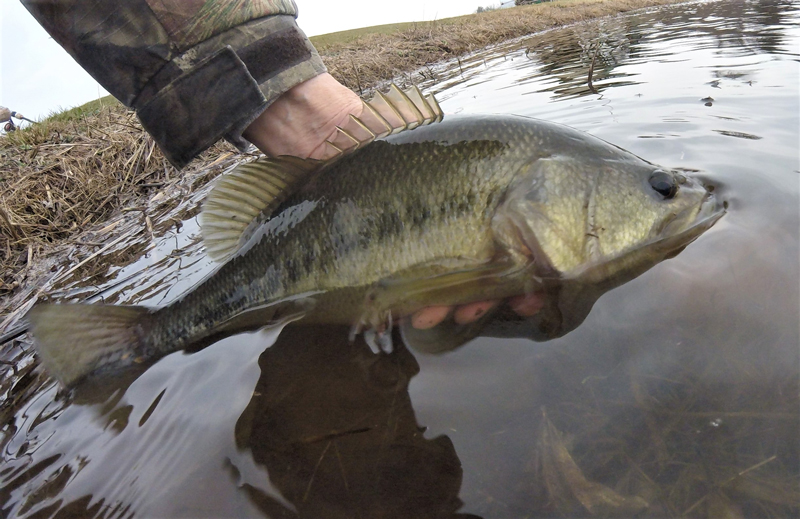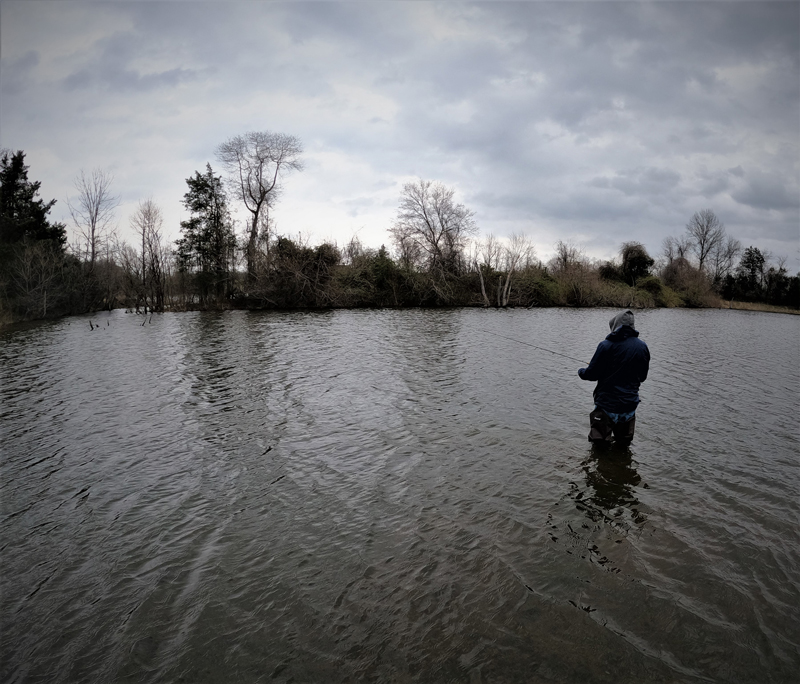Back a long, long time ago when I was in my mid-20s, I began diligently keeping fishing records for everything from crappie to catfish, for about 17 years. That was an endeavor I thought I’d keep up until the day I died. I kept a detailed journal of dates, weather, times, catches, locations and much, much more. However, as time wore on, other issues like raising a family, work, coaching, and playing music started to crowd out the record-keeping efforts and I just couldn’t devote the time to it. I probably learned more about fishing during those 17 years than any other period of my fishing life.

Fast-forward to the present-day era of computers, cellphones, and live sonar imaging. Surely I could, in my retirement years, advance my efforts and incorporate modern technology for a detailed, intricate, and accurate assessment of success and failure throughout my angling career… right? The creation of detailed graphs and mapping systems could easily send me on the way to stellar catches… true? And without a doubt, those new and fancy fishing apps would certainly make my decision-making chores a lot easier… correct?
Well, yes and no. You see, there is this strange and almost hypnotic realm in the fishing world that says things should turn out one way but, well, you know. Some call it luck, some call it karma, and others call it paying your dues. I found out a long time ago that if you wanted to catch fish, and especially big fish, you had to put in work and time, and assess each and every situation as a new and different experience. In time, I discovered that I could actually put the odds more and more in my favor by keeping an informative record that, over time, would prevail during most situations of similar weather and seasonal timeframes. But many other factors do come into play.
As many of you know, one of my passions for angling is locating and catching large, trophy-class panfish. Depending on the year, weather, and available fisheries, including emerging fisheries, I traditionally spend about 60 percent of my total angling effort on pursuing slab bluegills and crappies. That angling effort can include chunks of time that are earmarked for simply finding quality water, driving out and assessing new waters in question. More often than I care to admit, a rumor or hot-prospect does not pan out. Indeed, the pot at the end of the rainbow doesn’t always have gold in it.
During that 17-year period of record keeping I made precise location notes on various Mid-Atlantic public lakes, coves, creeks, and points. I noted sun-exposed areas for early springtime trips, and a variety of water level fluctuations. Cumulatively, most if not all of these factors play a role in success or failure. It’s easy for us to remember what lake, river, creek, or pond yielded the biggest catch of any given year, but you return another day to find the water is high and muddy or the weeds are to the surface, it’s obvious that the conditions are variable on almost every body of water we fish.
Since my retirement 13 years ago, I have used an informal record style whereby I make notes on a calendar rather than scribe in a journalistic manner. True, it doesn’t allow for the detail of the book or tablet form, but it does show me seasonal patterns, weather variations, and over a span of several years, where this or that fishery is headed in terms of species diversity, average size, and top-end size structure. Predator-prey relationships can shift over a period of time and where quality three- to five-pound bass once dominated, a lake or pond can emerge into water with smaller average sized bass but larger bluegills or crappies.
The recording of some information is obvious: where, when, water conditions, and lures or baits used to catch the fish. Average and top-end size structures should be tracked, although all of us know where we have caught our largest, most memorable catches. Overall, I have found that weather continues to dominate as a factor in angling success. With today’s improved weather forecasting it’s easier to cipher when, where, and what species and techniques to employ as compared to in the past.

If I were to fish this very day, the first thing I’d check is the weather forecast. My preference would be to fish during a falling barometer, perhaps ahead of a storm front or precipitation event, and I would pay close attention to wind direction and air temperature drops or rises. From big waters to small, the wind can do a lot to determine fish location, feeding activity, and access to the angler. I have found that fishing during mid-day during colder weather periods usually (usually) out-produces other timeframes. However, when ice-fishing or open water panfish fishing in the winter, low-light periods can, like in the summer, be a very productive time.
Logging often shows patterns and species behavior that many of us would otherwise forget or ignore. Big fish patterns tend to be different from smaller game. Rather than leaving details to memory, if time permits, at least from the onset try to record data such as lure size, color, depth of fish located and caught, sunlight penetration, and wind speed and direction. Barometric pressure, air and water temperatures, tidal phases, and additional notes on baitfish or insect activity are also important. Fish size and numbers caught will be the bottom line on what most of us consider a successful trip. But keep in mind that we often learn more when we have to fish hard and figure things out, rather than when the fish are going nuts and feeding like crazy.
Over the course of several years, patterns will emerge — and some may differ from one body of water to another, even with like species. By developing a three- to five-year record keeping process you can look back and see what patterns have been best, ones that are getting better, and how different fisheries are changing over time. What worked then may not produce now. That great little bass lake you used to nail them at might not have yielded a four-pounder in a couple of seasons; time to look elsewhere. The small river that had so many nice channel cats in it may evolve to produce fewer, yet bigger, cats than five years ago. As always, the introduction of a new species, native or invasive, can change things over time.
Regardless of your individual angling preferences, record-keeping is something that can teach us many things, and make us all better anglers.
-By Jim Gronaw
Editor’s note: You tech-savvy types may eschew manual logging in favor of apps that make it easy to collect and aggregate your fishing data. Check out “Best Fishing Apps to Turn Bytes into Bites” to learn which ones we found most helpful.